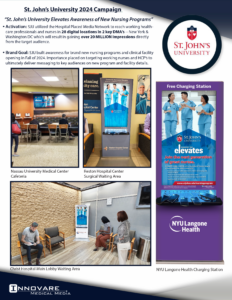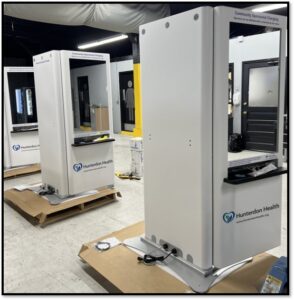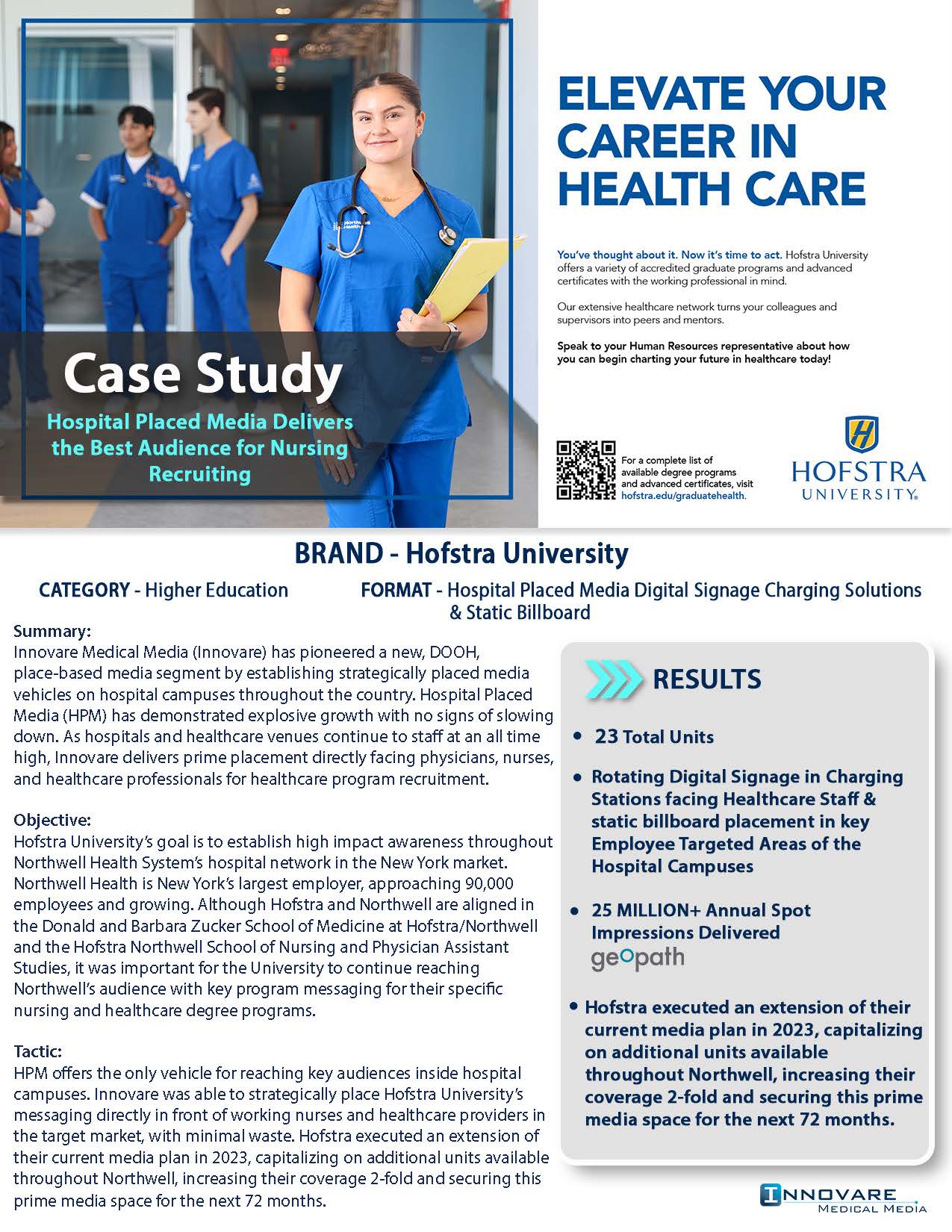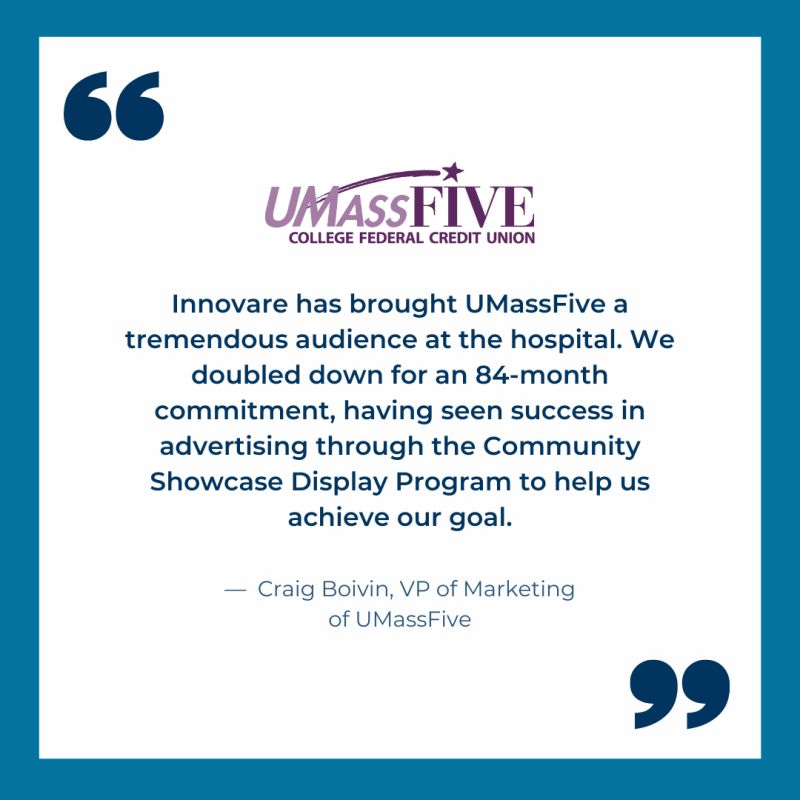
Blog
AdCouncil Fatherhood Involvement Campaign with Innovare Medical Media
AdCouncil Fatherhood Involvement Campaign with Innovare Medical Media #dadication
What is #Dadication? It’s just like dedication but it means that as a father, you never stop being a dad. There’s no one right way as long as you show up for your kids, even when it’s not so easy.
The Fatherhood Involvement campaign PSAs highlight the diverse experiences of real dads who share a commitment to being there for their kids through parenting highlights and challenges. By acknowledging the hard work they put forth in the face of hardships, the campaign seeks to provide all fathers with confidence to keep going in their efforts to be present for their children.
The AdCouncil ran this community campaign across the Innovare Hospital Placed Media network in top DMAs throughout the country.

Hunterdon Health Chooses Innovare for Patient Services
Innovare will Provide Three Free 6’ Tower Phone Charging Stations to Hunterdon Health

Hunterdon Health entered into a long-term partnership with Innovare Medical Media in June 2024 to receive three mobile phone charging stations that will be positioned to assist patients and visitors during their visits to the Hospital in Flemington, NJ and Health & Wellness Center in Clinton, NJ. This marks Innovare’s 17th hospital & health venue within NJ and 295th nationwide.
In order to support the free program that derives a new revenue stream for the health system, Innovare’s sales manager, Liz Zuk, and Hospital Placed Media Specialists, Tom Campbell and Cathy Breen, are working with local and regional supportive businesses.
The program’s LCDs will feature hospital service marketing messages with supportive local and regional business sponsors.
The photo attached is of Innovare’s charging station units at its partner, Meridian Zero’s, manufacturing site.

Boone Health Chooses Innovare for Marketing & Patient Services
Boone Health will Receive Multiple Phone Charging Stations for Patients and Visitors at No Cost to the Hospital
Innovare Medical Media has entered a multi-year contract with Boone Health to provide phone charging stations for patients, visitors, and healthcare professionals. This no-cost initiative will also allow the hospital to market its own services on commercial-grade embedded LCDs.
During the week of June 10th, Innovare will be meeting with 50+ businesses in the greater Columbia market who will help to sponsor this initiative. Many of these sponsors are current supporters of the health system and understand the great economic benefit between the community and its regional hospital. The Innovare team, consisting of Amanda Mack and Dominick Cirianni, looks forward to supporting the community and hospital. To learn more about Innovare and our partners, email: info@innovaremedia.com.
Boone Health is a 392-bed full-service hospital located in Columbia, MO, and excels in services such as cardiology, neurology, oncology, surgical, obstetrical, and orthopedics, among numerous other specialties.
Innovare is a family-operated business located in Branchburg, New Jersey, that has partnered with 300 hospitals and healthcare venues nationally. Innovare provides the hospitals with free phone charging stations, free digital marketing platforms, and the opportunity to create new revenue streams.

Innovare Medical Media Partners with the Ad Council for Hospital Placed Media
Innovare Medical Media is Proud to Partner Up with the Ad Council to Leverage Hospital Placed Media
Working in partnership with the Ad Council, Innovare Medical Media is proud to leverage Hospital Placed Media to change lives through the power of communication. With a focus on Alzheimer’s awareness, child car safety, diabetes prevention, fatherhood involvement, flu vaccination and saving for retirement, these campaigns will meet audiences at a critical point of care, educating patients and inspiring them to speak with their healthcare provider about these important issues.
Innovare co-founder Michael Ricciardi commented, “It is inspiring to see the powerful work behind The Ad Council and we are grateful to be able to support them with Innovare’s Hospital Placed Media Network.”
“It has been wonderful working with the team at Innovare as together, we have mapped out a great communication plan for 2024,” said Ad Council Assistant Manager Avery Bain. “We won’t stop until we live in a society where every single person can thrive.”

Innovare and Hofstra University Case Study

Michael Ricciardi – As Featured in The ADVERTISING Club on New York
April: The Trends That Stuck, the Trends That Flunked
1. Culture has become a huge initiative for many companies – especially those in the media and advertising industry. With the pandemic coming to an end, many are feeling stripped of their “work-life balance” that they felt they were given due to RTO. How is your agency or company managing culture/work life balance in 2024?
 Innovare Medical Media values a work hard/play hard mindset, and loves to see our team succeeding while having great fun, both working and playing…even when it is hard. In recent years, the traditional nine-to-five office model has undergone a remarkable transformation. The rise of remote work has revolutionized how we perceive productivity, collaboration, and work-life balance. In 2024, many companies and agencies are prioritizing the well-being of their employees as they transition back to more traditional work settings following the pandemic. Flexibility, Scheduling, Communication, and Time Off are all part of the equation of how Innovare Medical Media is managing culture and work-life balance for its team of Innovarians.
Innovare Medical Media values a work hard/play hard mindset, and loves to see our team succeeding while having great fun, both working and playing…even when it is hard. In recent years, the traditional nine-to-five office model has undergone a remarkable transformation. The rise of remote work has revolutionized how we perceive productivity, collaboration, and work-life balance. In 2024, many companies and agencies are prioritizing the well-being of their employees as they transition back to more traditional work settings following the pandemic. Flexibility, Scheduling, Communication, and Time Off are all part of the equation of how Innovare Medical Media is managing culture and work-life balance for its team of Innovarians.
- Flexibility: Innovarians have a hybrid schedule that allows them to work remotely part of the time and be in the office part of the time. This flexibility enables our team to better balance their work and personal lives while being productive and contributing to both.
- Scheduling: Innovare has seen some benefits as we continued the work from home hybrid model as it allows our team to have more control over their schedules and less commuting stress.
- Communication: Transparent communication from leadership regarding expectations for work hours, availability, deadlines, and performance helps the team manage their time effectively and reduces stress. Providing clear guidelines on when the team is expected to be available and when they can disconnect helps establish boundaries and maintain work-life balance.
- Time Off: Our team is encouraged to their paid take time off in order to recharge, spark creativity, and prevent burnout. In addition to PTO, Innovare offers the team a number of four-day extended holiday weekends throughout the year.

However, while remote work offers unparalleled flexibility, it’s essential not to overlook the importance of being in-office to foster culture and strengthen the idea sharing. Being at Innovare HQ, there are numerous opportunities for the team to engage where you see new opportunities for spontaneous interactions, as well as camaraderie, collaboration, and celebration. The backbone of our team is formed by the VITALS in which they live by. Similar to company values, the Innovare team operates on a core set of VITALS that become more evident with face-to-face interactions which facilitate solid relationships and cultivate a strong sense of belonging within our team. In addition, Innovare schedules frequent team building events in the office as well as offsite to celebrate coming together as a team as well as their hard work and success.
As Innovare continues to grow, we will navigate the evolving landscape of work, embracing flexibility while nurturing in-office culture. With the right balance in a hybrid model, we believe Innovare is able to maximize our team’s performance in what will continue to be an ever-changing, dynamic world.

About Innovare: Innovare Medical Media is partnered with close to 300 Hospitals and healthcare venues nationwide in over 30 states to deliver a community showcase advertising program on hospital campuses. This program, delivered at no cost, provides hospitals with a marketing opportunity, a mobile phone charging patience service, and a new unrestricted revenue stream. To sponsor the program, local, regional, and national businesses participate to advertise their products and services to the valuable demographics of healthcare professionals, visitors and patients. Learn more at www.innovaremedia.com.
About the author you can find Mike outside of work on a field or court coaching and playing with one of his three kids, hanging out with his wonderful wife, or teeing it up on the golf course.
Banks & Credit Unions love Hospital Placed Media
Success Spotlight of our valued advertisers at
UMassFive College Federal Credit Union!
Our journey with UMassFive has been ongoing for over 8 years, and we’re proud to showcase the achievements that our collaboration has brought forth.

ESSA Bank & Trust and Innovare Medical Media Partnership
ESSA Promotes its Products and Services to Healthcare Professionals, Visitors, and Patients
Also Featured Here on: Lehigh Valley Business

Branchburg, NJ (February 15, 2024) – Innovare Medical Media (Innovare) has partnered with close to 300 hospitals in over 30 states and provides hospitals with digital screens accompanied by cell phone charging stations. In 2019, Innovare was searching for a well-respected, resourceful, and customer service focused community bank to support its business operations and growth aspirations.
Peter Gray, ESSA Bank & Trust’s SEVP, Chief Operating Officer, assured Innovare that ESSA Bank & Trust would be able to deliver all these things and more. Over the years, ESSA has provided exceptional support and services to Innovare in several areas, including ongoing banking advice, cash management, lines of credit, and long/short-term loans. Additionally, during the COVID epidemic, a time of chaos and confusion, ESSA assisted Innovare in its application for the Paycheck Protection Program (PPP) and became a source of stability for its business. Innovare is thrilled with the banking relationship provided by some exceptional individuals, including Steve Bowers, Regional President – Lehigh Valley Region; Terese Haas, Senior Small Business Relationship Manager; and Cara Butz, Cash Management Officer.
Recently, Innovare was eager to learn that ESSA chose to partner on the Innovare Community Showcase Programs to market their banking services at five hospitals in the greater Lehigh Valley. Bowers spoke enthusiastically about the partnership: “ESSA is thrilled to expand our relationship with Innovare Medical Media. The tens of thousands of healthcare professionals, visitors, and patients are an ideal audience for us to showcase our growing suite of products and services. We are excited to be associated with the marketing program at these leading Lehigh Valley institutions.”
About Innovare Medical Media:
Innovare Medical Media is partnered with close to 300 Hospitals and healthcare venues nationwide in over 30 states to deliver a community showcase program. This program, delivered at no cost, provides hospitals with a marketing opportunity, a mobile phone charging patience service, and a new unrestricted revenue stream. Local, regional, and national businesses participate to advertise their products and services to healthcare professionals, visitors and patients. Learn more at www.innovaremedia.com.
About ESSA:
ESSA Bancorp, Inc. is the holding company for its wholly owned subsidiary, ESSA Bank & Trust, which was formed in 1916. Headquartered in Stroudsburg, Pennsylvania, the Company has total assets of $2.3 billion and has 21 community offices throughout the Greater Pocono, Lehigh Valley, Scranton/Wilkes-Barre, and suburban Philadelphia areas. ESSA Bank & Trust offers a full range of commercial and retail financial services, asset management and trust services, investment services through Ameriprise Financial Institutions Group and insurance benefit services through ESSA Advisory Services, LLC. ESSA Bancorp Inc. stock trades on the NASDAQ Global Market (SM) under the symbol “ESSA.”
University Hospitals in Ohio Expands Further with Innovare
 The Innovare team took to the Ohio market yet again to spark and exciting sales launch for two more medical centers within the University Hospitals system in Northeast Ohio. UH TriPoint in Concord Township and UH Lake West in Willoughby will be live with new, digital charging solutions this spring expanding the advertising footprint in Northeast Ohio with even more valuable impressions.
The Innovare team took to the Ohio market yet again to spark and exciting sales launch for two more medical centers within the University Hospitals system in Northeast Ohio. UH TriPoint in Concord Township and UH Lake West in Willoughby will be live with new, digital charging solutions this spring expanding the advertising footprint in Northeast Ohio with even more valuable impressions.
Innovare Sales Manager, Liz Zuk commented, “The feedback from advertisers in this region has been fabulous. It is incredible to see the various industries that have chosen to participate in the UH programs. We are excited about the growth we are experiencing in this market and look forward to staying on this trajectory.”
Of the 28 healthcare venues that Innovare is partnered with in Ohio, University Hospitals represents 12 hospitals.
Learn more about Innovare Here!
Learn more about what Innovare’s hospitals are saying Here!

